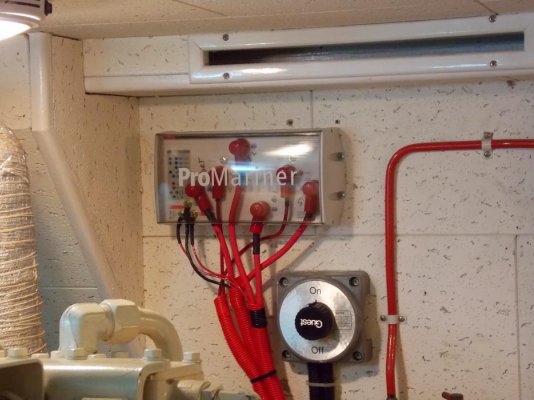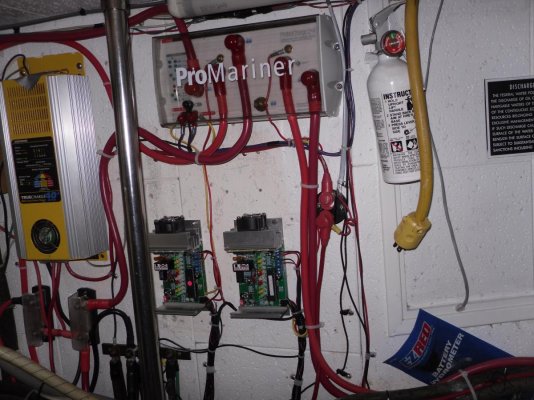Alaskan Sea-Duction
Guru
- Joined
- Jul 6, 2012
- Messages
- 8,084
- Location
- USA
- Vessel Name
- Alaskan Sea-Duction
- Vessel Make
- 1988 M/Y Camargue YachtFisher
Just to finish off
Last week I scrapped the old battery Isolator and went with a new ProMariner unit that is completely electronic and very easy to install. The old isolator need a diode kit installed on the start batteries and the kit was no longer available. The new one allows two alternator inputs and 4 battery outputs. The system also prioritizes the start batteries before charging your house batteries.
No I need to go get 4 more batteries (8 total) and my system is complete
Here is what I installed:
http://promariner.com/products/prolsocharge-series/
Last week I scrapped the old battery Isolator and went with a new ProMariner unit that is completely electronic and very easy to install. The old isolator need a diode kit installed on the start batteries and the kit was no longer available. The new one allows two alternator inputs and 4 battery outputs. The system also prioritizes the start batteries before charging your house batteries.
No I need to go get 4 more batteries (8 total) and my system is complete
Here is what I installed:
http://promariner.com/products/prolsocharge-series/



